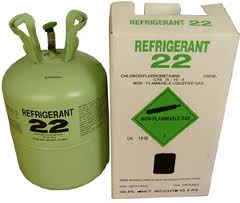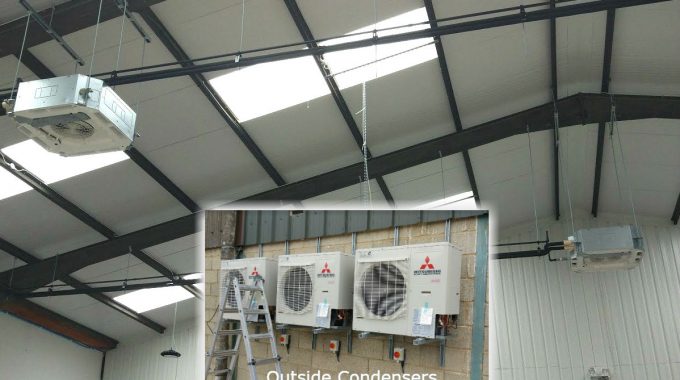
This article discusses the biggest change ever to affect the air conditioning and refrigeration industry. Under EC Ozone Regulation member states have obligations to halt damage to the ozone layer by phasing out ozone depleting substances. The process began in the 1990s and largely concludes at the end of 2014. This article specifically discusses one of the most commonly used refrigerant gases that is being phased out – R22.
Why is R22 being phased out?
Systems using modern refrigerants use approximately 40% less energy to heat and cool than older systems using refrigerants such as R22. Also, R22 refrigerant is proven to directly deplete the ozone and hence is bad for the environment.
So there are very good reasons for moving away from this and similar gases. In fact, since 2010, new European legislation prevents any new supplies of this gas from being made, leaving only a declining supply of recycled gas available for air conditioning servicing and repairs. At the end of 2014, you will no longer be able to use even recycled stocks in air conditioning systems. Therefore, air conditioning equipment using R22 after this date will be classed as ‘Not Serviceable’. Even before this date, they are becoming increasingly costly to repair, with both reclaimed R22 and spares being harder to obtain and at higher prices.
The problems with modern refrigerants:
Despite the energy efficiency and ozone benefits of modern refrigeration gases, they do have two major flaws:
[ol style=”13″] [li]Although they do not contribute to depletion of the ozone layer like R22, they still contribute to global warming if not closely controlled. This is why F-Gas regulations were introduced to enforce safe use of these refrigerants, preventing discharge of potentially harmful gases into the atmosphere. Amongst other things, these regulations stipulate mandatory maintenance records for refrigerant plant.[/li] [li]Secondly, and the main reason for this article, modern refrigerants cannot be easily retro-fitted into older refrigeration equipment. The properties of these gas do not closely resemble R22 in terms operating temperatures and require major changes to equipment in order to operate.[/li] [/ol]
So what are my R22 replacement options
Businesses with equipment using R22 refrigerant should begin to plan its phase out now – it is not optional. There are a number decision factors to consider:
Plant Age – an old plant should be replaced, but a young plant might be suitable for modification to an alternative refrigerant. If a plant is already relatively old e.g. >15 years, then plant replacement is likely to be the best option.
Performance – if the plant is known to be inefficient, unreliable or unsuited to the current and future cooling loads then plant replacement is likely to be the best option.
Plant design – some plants are not well suited to refrigerant replacement. You should seeks specialist advice.
Option |
Pros |
Cons |
Replace R22 Plant |
|
|
Modify R22 Plant to new refrigerant |
|
|
Continue with existing plant using recycled R22 refrigerants |
|
|
What is involved in modifying R22 Plant to new refrigerant?
A number of refrigerant gases have been specifically designed to aid the transition to modern highly efficient gases. These are ‘blended’ gases that have properties that very closely resemble older gases such as R22. Although these gases don’t have the ozone depleting implications of R22, they also don’t have the energy efficiency benefits of modern gases. They are simply intended to extend the life of existing equipment beyond the ban deadline.
R22 replacement gases |
R22 replacement for …. |
| R417a(DuPont™ ISCEON® MO59) |
|
| R422D (DuPont™ ISCEON® MO29) |
|
| R422A (DuPont™ ISCEON® MO79 ) |
|
| R424a (RS-44) |
|
| R438a (ISCEON® MO99) |
|







